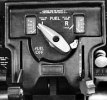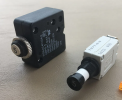I have read many post in a lot of forums that Low wing do not have both in case one tank runs dry the pump would pull from the dry engine not the one with fuel.
First except for a leak, clog etc or just turning in circles all day I would think a low wing aircraft running properly would have pretty even fuel burn between tanks
I know the FAR indicate no one fuel pump can draw from two tanks at a time.
So why wouldn't this work so pilots don't have deal with diverting attention to switching tanks just use two fuel pumps one in each wing with a selector left both right and off
Each tank having its own pump does not violate FAR. So you are on both and notice a significant fuel imbalance on your fuel gauge something is probably wrong (again I dont see why burn rate port and stbd sould differ that much) so you switch tanks now you are using the pump in that wing only. With both selected left and right pumps run at same time.
If somehow you manange to run one tank dry maybe pilot error in not topping off both tanks (or leak) you would think the pump in the wing with fuel would keep you flying even without selecting the wing with the fuel in it. If the pump senses it is sucking air employ a sensor to shut it off, again your other pump will still be running. It is pretty easy just to look at your fuel gauge to see if you have uneven burn or one tank is empty, then select the tank with more fuel in it if you wish.
Where is this logic incorrect it seems too simple that this type of system is not used.
First except for a leak, clog etc or just turning in circles all day I would think a low wing aircraft running properly would have pretty even fuel burn between tanks
I know the FAR indicate no one fuel pump can draw from two tanks at a time.
So why wouldn't this work so pilots don't have deal with diverting attention to switching tanks just use two fuel pumps one in each wing with a selector left both right and off
Each tank having its own pump does not violate FAR. So you are on both and notice a significant fuel imbalance on your fuel gauge something is probably wrong (again I dont see why burn rate port and stbd sould differ that much) so you switch tanks now you are using the pump in that wing only. With both selected left and right pumps run at same time.
If somehow you manange to run one tank dry maybe pilot error in not topping off both tanks (or leak) you would think the pump in the wing with fuel would keep you flying even without selecting the wing with the fuel in it. If the pump senses it is sucking air employ a sensor to shut it off, again your other pump will still be running. It is pretty easy just to look at your fuel gauge to see if you have uneven burn or one tank is empty, then select the tank with more fuel in it if you wish.
Where is this logic incorrect it seems too simple that this type of system is not used.


